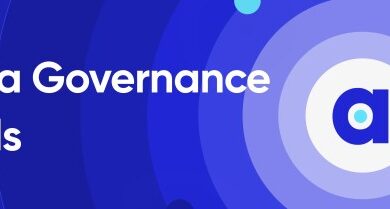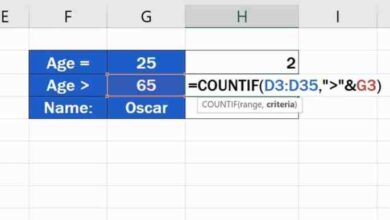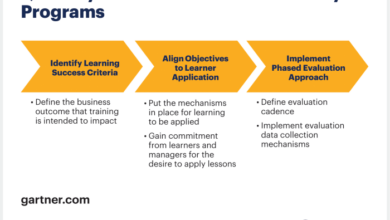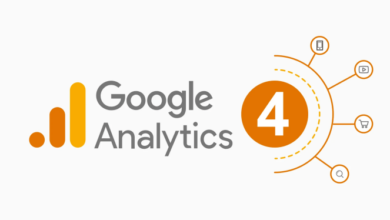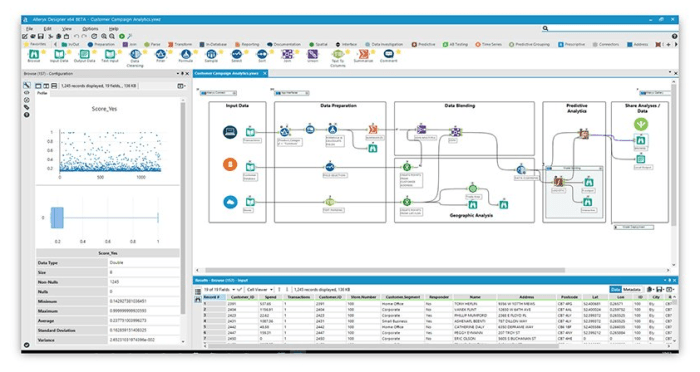
Find the Best Data Preparation Software for Your Needs
Best data preparation software takes center stage in the modern data-driven world, transforming raw data into valuable insights. This software empowers analysts and data scientists to clean, transform, and enrich data, ultimately improving the accuracy and reliability of their findings.
Data preparation software is essential for anyone who works with data, from small businesses to large enterprises. It can help you to improve the quality of your data, automate repetitive tasks, and gain a deeper understanding of your business. Whether you’re a data analyst, a business intelligence professional, or simply someone who wants to make better use of your data, this software can be a valuable asset.
What is Data Preparation Software?
Data preparation software is an essential tool in the data analysis process, playing a crucial role in transforming raw data into a usable and insightful format. This software automates and streamlines the complex tasks involved in preparing data for analysis, enabling data scientists, analysts, and business users to derive meaningful insights from their data.
Purpose and Role
Data preparation software is designed to bridge the gap between raw, messy data and the structured, clean data required for analysis. It acts as a pre-processing step, ensuring that data is accurate, consistent, and ready for analysis. This software handles various data preparation tasks, such as data cleaning, transformation, and enrichment, which are often tedious and time-consuming if done manually.
Key Features and Functionalities
Data preparation software offers a range of features and functionalities to address various data preparation challenges. Some key features include:
- Data Cleaning:This involves identifying and correcting errors, inconsistencies, and missing values in the data. Common data cleaning tasks include removing duplicates, handling missing values, and correcting data types.
- Data Transformation:Data transformation involves converting data into a suitable format for analysis. This may include tasks like changing data types, aggregating data, and creating new variables.
- Data Enrichment:This involves adding additional information to the existing dataset to enhance its value. Data enrichment can include tasks like adding geographical data, demographic information, or market trends.
- Data Validation:This feature helps ensure the quality and consistency of the data by verifying that it meets specific criteria. Data validation can involve checking for data ranges, formats, and business rules.
- Data Integration:This feature enables the combination of data from multiple sources, such as databases, spreadsheets, and files, into a unified dataset.
Common Data Preparation Tasks
Data preparation software facilitates a wide range of tasks that are essential for data analysis. Some common examples include:
- Data Cleaning:Removing duplicate records, handling missing values by imputation or deletion, correcting data types, and standardizing data formats.
- Data Transformation:Transforming data into a suitable format for analysis, such as converting categorical variables into numerical variables, creating new variables based on existing ones, and aggregating data.
- Data Enrichment:Adding relevant information to the dataset, such as adding geographical data, demographic information, or market trends.
Benefits of Using Data Preparation Software
Data preparation software is an essential tool for anyone who works with data, from data scientists and analysts to business users. It can help you clean, transform, and enrich your data, making it ready for analysis and decision-making.
Improving Data Quality and Accuracy, Best data preparation software
Data preparation software plays a crucial role in enhancing the quality and accuracy of your data. This is achieved through various methods, including:
- Data Cleaning:This involves identifying and correcting errors, inconsistencies, and missing values in your data. Data preparation software can automatically detect and fix these issues, saving you time and effort. For example, it can identify duplicate records, correct typos, and fill in missing values based on patterns in the data.
- Data Transformation:This process involves converting data into a format suitable for analysis. Data preparation software can perform various transformations, such as:
- Data Aggregation:Combining data from multiple sources into a single dataset.
- Data Normalization:Scaling data to a common range, making it easier to compare and analyze.
- Data Encoding:Converting categorical data into numerical values, which is essential for many machine learning algorithms.
- Data Enrichment:This involves adding valuable information to your data. Data preparation software can access external data sources, such as public databases or APIs, to enrich your dataset. For example, you can add demographic information, location data, or market trends to your customer data.
Streamlining Data Analysis Workflows
Data preparation software can streamline your data analysis workflows by:
- Automating Repetitive Tasks:Data preparation often involves repetitive tasks, such as cleaning, transforming, and validating data. Data preparation software can automate these tasks, freeing up your time for more strategic analysis.
- Centralizing Data Preparation:Data preparation software provides a central platform for managing and preparing your data. This eliminates the need to use multiple tools and spreadsheets, simplifying your workflow and reducing the risk of errors.
- Enabling Collaboration:Data preparation software can facilitate collaboration among data analysts, data scientists, and business users. It allows you to share prepared data sets and workflows, ensuring everyone is working with the same information.
Key Considerations When Choosing Data Preparation Software
Choosing the right data preparation software is crucial for ensuring high-quality data analysis and insights. Selecting the best option requires careful consideration of several key factors that align with your specific needs and goals.
Compatibility with Existing Data Sources and Analysis Tools
Compatibility is paramount when choosing data preparation software. It’s essential to ensure the software seamlessly integrates with your existing data sources and analysis tools. This ensures a smooth workflow, minimizes data migration issues, and avoids the need for manual data manipulation.
- Data Source Compatibility:The software should support the various data sources you use, including databases, spreadsheets, cloud storage platforms, and other data formats. This ensures you can easily access and prepare data from different sources without encountering compatibility issues.
- Analysis Tool Integration:Seamless integration with your preferred analysis tools is essential. The software should offer connectors or APIs that allow data to be easily transferred to tools like business intelligence platforms, statistical packages, or machine learning algorithms.
User-Friendly Interfaces and Intuitive Features
Data preparation software should be user-friendly and intuitive, regardless of technical expertise. A well-designed interface simplifies the data preparation process, making it accessible to a wider range of users.
- Intuitive User Interface:The software should have a clean and straightforward interface that is easy to navigate. This allows users to quickly find the features they need and complete data preparation tasks efficiently.
- Drag-and-Drop Functionality:Drag-and-drop features simplify complex data transformations. Users can easily move data between fields, apply transformations, and visualize data without writing complex code.
- Visual Data Exploration:Data visualization tools within the software allow users to explore data visually, identify patterns, and gain insights before proceeding with data preparation tasks. This helps ensure data quality and relevance.
Types of Data Preparation Software

Data preparation software comes in various forms, each designed to cater to specific needs and user expertise. Understanding these categories can help you choose the best solution for your data preparation needs.
Choosing the best data preparation software is crucial for any data-driven project. It’s essential to have tools that can handle data cleaning, transformation, and enrichment effectively, ensuring that your data is ready for analysis. For example, understanding the aftermath of the kaser focus keigh3 event could require extensive data preparation to identify patterns and trends.
Ultimately, selecting the right data preparation software will streamline your workflow and lead to more insightful results.
Data Cleaning Software
Data cleaning software focuses on identifying and correcting errors, inconsistencies, and inaccuracies in data. These tools help ensure data quality by:
- Identifying and Removing Duplicates:Detecting and eliminating duplicate entries in datasets to prevent redundancy and ensure data integrity.
- Handling Missing Values:Imputing missing values based on various techniques like mean, median, or using machine learning algorithms to maintain data completeness.
- Standardizing Data Formats:Ensuring consistency in data formats, such as dates, numbers, and text, across different sources.
- Correcting Typos and Inaccuracies:Identifying and correcting spelling errors, inconsistencies in data entries, and other inaccuracies.
Examples of Data Cleaning Software:
- Trifacta Wrangler:A cloud-based data preparation platform that provides an intuitive interface for data cleaning, transformation, and enrichment.
- Paxata:A self-service data preparation tool that combines data cleaning, transformation, and analysis capabilities.
- Dataiku:A collaborative data science and machine learning platform that includes data cleaning and preparation features.
Data Transformation Software
Data transformation software enables you to modify and restructure data to meet specific requirements. This includes:
- Data Aggregation:Combining data from multiple sources into a single dataset, often for analysis or reporting.
- Data Conversion:Converting data from one format to another, such as from CSV to JSON or from SQL to XML.
- Data Reshaping:Changing the structure of data, such as pivoting tables or transposing rows and columns.
- Data Enrichment:Adding new information to existing datasets, such as location data or demographic information.
Examples of Data Transformation Software:
- Alteryx:A data analytics platform that offers a drag-and-drop interface for data transformation, blending, and analysis.
- Tableau Prep:A data preparation tool from Tableau that simplifies data cleaning, shaping, and blending for visualization.
- Python Pandas:A powerful Python library that provides extensive data manipulation and analysis capabilities.
Data Enrichment Software
Data enrichment software enhances the value of your data by adding relevant information from external sources. This can include:
- Geocoding:Adding geographic coordinates (latitude and longitude) to address data.
- Demographic Information:Appending demographic data, such as age, income, and education level, to customer records.
- Business Data:Integrating company information, such as revenue, industry, and employee count, into datasets.
- Social Media Data:Appending social media profiles and engagement metrics to customer records.
Examples of Data Enrichment Software:
- Clearbit:A company that provides data enrichment services for enriching customer data with company information and contact details.
- ZoomInfo:A platform that offers comprehensive data enrichment solutions, including contact information, company data, and firmographic details.
- FullContact:A service that combines data from various sources to create comprehensive profiles of individuals, including social media, professional, and contact information.
Data Visualization Software
Data visualization software focuses on creating visual representations of data, making it easier to understand and analyze. This can include:
- Charts and Graphs:Creating various chart types, such as bar charts, line graphs, scatter plots, and pie charts, to present data visually.
- Dashboards:Combining multiple visualizations into interactive dashboards for comprehensive data exploration.
- Maps:Visualizing data on maps to show geographic patterns and relationships.
- Interactive Reports:Creating interactive reports that allow users to explore data dynamically.
Examples of Data Visualization Software:
- Tableau:A powerful data visualization platform that offers a wide range of charts, dashboards, and interactive features.
- Power BI:A business intelligence and data visualization tool from Microsoft that provides comprehensive data exploration and reporting capabilities.
- Qlik Sense:A self-service business intelligence platform that enables users to create interactive dashboards and visualizations.
Data Preparation Software Comparison
| Software | Features | Pricing | Target Audience |
|---|---|---|---|
| Trifacta Wrangler | Data cleaning, transformation, enrichment, visualization | Subscription-based, various plans available | Data analysts, data scientists, business users |
| Paxata | Data cleaning, transformation, analysis, collaboration | Subscription-based, various plans available | Data analysts, business users, data engineers |
| Dataiku | Data preparation, machine learning, collaborative data science | Subscription-based, various plans available | Data scientists, data engineers, business analysts |
| Alteryx | Data blending, transformation, analysis, automation | Subscription-based, various plans available | Data analysts, data scientists, business users |
| Tableau Prep | Data cleaning, shaping, blending, visualization | Subscription-based, various plans available | Data analysts, business users, data visualization professionals |
| Python Pandas | Data manipulation, analysis, transformation | Open source (free) | Data scientists, developers, data analysts |
| Clearbit | Data enrichment, company information, contact details | Subscription-based, various plans available | Marketing teams, sales teams, business development teams |
| ZoomInfo | Data enrichment, contact information, company data | Subscription-based, various plans available | Sales teams, marketing teams, business development teams |
| FullContact | Data enrichment, social media profiles, contact information | Subscription-based, various plans available | Marketing teams, sales teams, customer service teams |
| Tableau | Data visualization, dashboards, interactive reports | Subscription-based, various plans available | Data analysts, business users, data visualization professionals |
| Power BI | Data visualization, dashboards, business intelligence | Subscription-based, various plans available | Business users, data analysts, data scientists |
| Qlik Sense | Data visualization, dashboards, self-service business intelligence | Subscription-based, various plans available | Business users, data analysts, data scientists |
Popular Data Preparation Software Solutions

The data preparation software market is brimming with solutions, each catering to different needs and budgets. Understanding the strengths and weaknesses of these solutions is crucial for making an informed decision. This section will delve into some popular data preparation software solutions, highlighting their key features, limitations, and pricing.
Trifacta Wrangler
Trifacta Wrangler is a cloud-based data preparation platform designed for both business users and data scientists. It offers a user-friendly interface with a visual drag-and-drop functionality, making it easy to clean, transform, and prepare data for analysis.
- Strengths:
- Intuitive visual interface with drag-and-drop functionality.
- Supports a wide range of data sources, including cloud storage, databases, and flat files.
- Offers advanced data transformation capabilities, including data cleansing, enrichment, and aggregation.
- Provides a collaborative environment for data preparation tasks.
- Weaknesses:
- Can be expensive for small businesses.
- May require some technical expertise for more complex data preparation tasks.
- Pricing:
- Trifacta Wrangler offers a subscription-based pricing model, with different tiers based on features and usage.
Alteryx
Alteryx is a comprehensive data analytics platform that includes robust data preparation capabilities. It uses a visual workflow approach, allowing users to connect different data preparation operations into a single, automated process.
- Strengths:
- Powerful data blending and transformation capabilities.
- Offers a wide range of pre-built data preparation tools and functions.
- Provides a visual workflow environment for easy data preparation process management.
- Supports both on-premise and cloud deployments.
- Weaknesses:
- Can be expensive for smaller businesses.
- Requires some training and learning to master its complex functionalities.
- Pricing:
- Alteryx offers a subscription-based pricing model, with different tiers based on features and usage.
Paxata
Paxata is a self-service data preparation platform designed to empower business users to prepare their own data for analysis. It utilizes a combination of machine learning and visual interfaces to simplify data preparation tasks.
- Strengths:
- Intuitive visual interface with natural language processing capabilities.
- Offers automated data cleansing and transformation features.
- Provides a self-service data preparation experience, allowing users to prepare data without requiring extensive technical skills.
- Supports a wide range of data sources.
- Weaknesses:
- Can be limited in terms of advanced data transformation capabilities compared to other solutions.
- May require some technical expertise for more complex data preparation tasks.
- Pricing:
- Paxata offers a subscription-based pricing model, with different tiers based on features and usage.
Dataiku
Dataiku is a collaborative data science and machine learning platform that includes comprehensive data preparation capabilities. It provides a unified environment for data exploration, preparation, modeling, and deployment.
- Strengths:
- Offers a collaborative environment for data preparation tasks.
- Provides a wide range of data preparation tools and functions.
- Supports a variety of data sources and formats.
- Integrates seamlessly with other data science tools and platforms.
- Weaknesses:
- Can be expensive for smaller businesses.
- Requires some training and learning to master its functionalities.
- Pricing:
- Dataiku offers a subscription-based pricing model, with different tiers based on features and usage.
Tableau Prep
Tableau Prep is a data preparation tool from Tableau, a popular data visualization platform. It provides a user-friendly interface for cleaning, transforming, and shaping data before it is visualized in Tableau.
- Strengths:
- Intuitive visual interface with drag-and-drop functionality.
- Integrates seamlessly with Tableau Desktop and Tableau Server.
- Offers a wide range of data preparation tools and functions.
- Provides a visual workflow environment for easy data preparation process management.
- Weaknesses:
- Limited in terms of advanced data transformation capabilities compared to other solutions.
- Primarily designed for data preparation for Tableau visualizations.
- Pricing:
- Tableau Prep is included in Tableau Desktop and Tableau Server subscriptions.
Data Preparation Best Practices
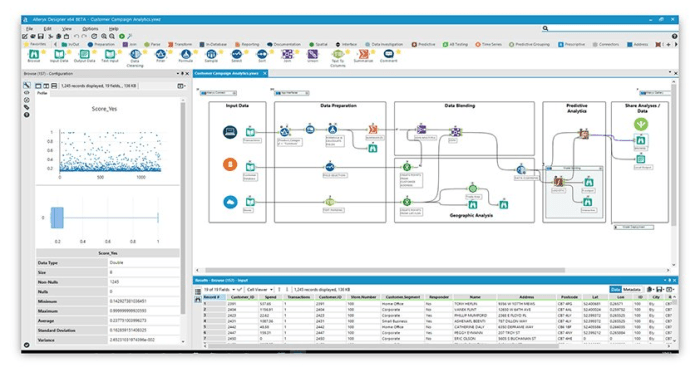
Data preparation is the process of transforming raw data into a format that is suitable for analysis and modeling. It is a crucial step in any data-driven project, as it ensures the quality and consistency of the data used. Effective data preparation can lead to more accurate insights, better model performance, and ultimately, better decision-making.
Data Validation and Quality Assurance
Data validation and quality assurance are essential aspects of data preparation. They involve verifying the accuracy, completeness, and consistency of the data. This ensures that the data used for analysis is reliable and trustworthy.
- Data Completeness:This involves checking for missing values and addressing them appropriately. Missing values can be handled by imputation, which involves using statistical methods to estimate the missing values based on other available data. Alternatively, they can be removed, but only if the removal does not significantly impact the analysis.
- Data Accuracy:This involves verifying the correctness of the data, identifying and correcting any errors or inconsistencies. Data accuracy can be checked by comparing the data against known sources or by using data validation rules. For example, you can verify that dates are in the correct format, phone numbers have the correct number of digits, or that values fall within a specific range.
- Data Consistency:This involves ensuring that the data is consistent across different sources and formats. This can be achieved by standardizing data formats, using consistent units of measurement, and ensuring that data values are consistent with predefined rules.
Handling Missing Values
Missing values are a common occurrence in real-world datasets. It is important to handle them appropriately to avoid introducing bias or errors into the analysis.
Finding the best data preparation software can be a real challenge, especially with so many options out there. But, if you’re looking for a solution that’s deeply integrated with the cloud, you might want to consider Informatica. They’ve recently strengthened their AWS support , making it easier to manage and prepare data in the cloud.
With Informatica’s powerful tools and enhanced cloud integration, you’ll be well on your way to cleaner, more reliable data for your business.
- Imputation:This involves using statistical methods to estimate the missing values based on other available data. For example, mean imputation can be used to replace missing values with the mean of the non-missing values in a column. Other imputation methods include median imputation, mode imputation, and k-nearest neighbors (KNN) imputation.
- Deletion:In some cases, it may be appropriate to delete rows or columns with missing values. This is only recommended if the number of missing values is small and their removal does not significantly impact the analysis.
- Leaving them as is:For some algorithms, it might be acceptable to leave the missing values as is. For example, decision trees can handle missing values without requiring imputation.
Handling Outliers
Outliers are data points that are significantly different from other data points in the dataset. They can distort statistical analysis and lead to inaccurate results.
Finding the best data preparation software can feel like searching for the perfect Christmas tree topper – you want something that’s both functional and festive. Just like a well-chosen topper can elevate your tree’s aesthetic, the right data prep tool can make your analysis shine.
If you’re looking for some DIY inspiration for your Christmas tree, check out these easy DIY Christmas tree toppers. Once you’ve adorned your tree, you can get back to tackling your data with a powerful and efficient preparation tool.
- Identification:Outliers can be identified using various techniques, such as box plots, scatter plots, and statistical measures like the z-score.
- Treatment:Once identified, outliers can be treated by removing them from the dataset, transforming them, or using robust statistical methods that are less sensitive to outliers.
Handling Inconsistent Data
Inconsistent data can occur due to errors in data entry, different data sources, or changing data definitions. It is important to identify and correct inconsistencies to ensure data quality.
- Standardization:This involves transforming data into a consistent format, such as standardizing date formats, units of measurement, and data values. For example, you can convert all dates to a common format, such as YYYY-MM-DD.
- Data Cleaning:This involves identifying and correcting errors in the data. For example, you can identify and correct typos, remove duplicate entries, and correct inconsistent data values.
Data Preparation Software and Data Governance: Best Data Preparation Software
Data governance is the process of ensuring that data is managed in a consistent and controlled manner. This includes defining data standards, establishing data ownership, and implementing data security measures. Data preparation software plays a crucial role in data governance by improving data quality, ensuring data consistency, and facilitating data compliance.
The Role of Data Preparation Software in Data Governance
Data preparation software helps streamline the data governance process by automating tasks like data cleansing, transformation, and enrichment. By improving data quality, these tools enable organizations to make better decisions based on accurate and reliable data. Data preparation software can also help organizations meet compliance requirements by ensuring that data is accurate, complete, and consistent.
Data Preparation Tools Contribute to Data Quality Management and Compliance
- Data Cleansing:Data preparation software can identify and remove errors, inconsistencies, and duplicates from data, improving its accuracy and reliability. For example, it can identify and correct invalid email addresses, phone numbers, or zip codes, ensuring data integrity.
- Data Transformation:Data preparation tools can transform data into a consistent format, making it easier to analyze and use. This can involve converting data types, standardizing data formats, and applying business rules. For instance, converting dates from various formats into a single standard format or converting currency values into a specific currency.
- Data Enrichment:Data preparation software can enrich data by adding valuable context and insights. This can involve adding missing information, appending external data sources, or creating new features. For example, enriching customer data by adding demographics, location information, or purchase history from external databases.
- Data Validation:Data preparation tools can validate data against predefined rules and constraints, ensuring data quality and compliance. This involves checking data against business rules, industry standards, or regulatory requirements. For instance, validating credit card numbers against the Luhn algorithm to ensure their validity.
Potential Challenges and Considerations for Data Governance in the Context of Data Preparation
While data preparation software offers significant benefits for data governance, there are also challenges and considerations to address:
- Data Security:Organizations must ensure that data preparation processes are secure and comply with data privacy regulations. This involves implementing access controls, encryption, and data masking techniques to protect sensitive information.
- Data Ownership and Responsibility:Establishing clear data ownership and responsibility is crucial for data governance. Organizations need to define who is responsible for data quality, data security, and data compliance. This ensures accountability and efficient data management.
- Data Lineage and Traceability:Tracking the origin and transformations of data is essential for data governance. Organizations need to maintain a clear record of data lineage, enabling them to understand how data is used, its impact, and potential risks. This helps with auditing and compliance efforts.
- Data Governance Policies and Procedures:Organizations need to establish comprehensive data governance policies and procedures that define data standards, data quality requirements, and data security protocols. These policies should be communicated and enforced across the organization.
Future Trends in Data Preparation Software
The field of data preparation is constantly evolving, driven by advancements in technology and the growing need for efficient and accurate data analysis. As businesses increasingly rely on data-driven decisions, the demand for sophisticated data preparation tools will continue to grow.
The Influence of Artificial Intelligence and Machine Learning
Artificial intelligence (AI) and machine learning (ML) are transforming data preparation by automating complex tasks and improving the overall process. AI-powered data preparation tools can analyze data patterns, identify and handle inconsistencies, and suggest optimal data cleaning and transformation methods.
This allows data scientists and analysts to focus on higher-level tasks, such as data exploration and model building.
- Automated Data Cleaning:AI algorithms can identify and correct errors in data, such as missing values, outliers, and inconsistencies. This frees up time for data professionals and improves the accuracy of data analysis.
- Data Transformation and Feature Engineering:AI-powered tools can automatically transform data into formats suitable for specific analyses. They can also create new features from existing data, which can enhance the performance of machine learning models.
- Data Quality Monitoring:AI can continuously monitor data quality and alert users to potential issues, ensuring that data remains accurate and reliable over time.
Integration with Cloud Platforms
Cloud-based data preparation software offers several advantages, including scalability, flexibility, and cost-effectiveness. As businesses move their data and applications to the cloud, data preparation tools are increasingly being integrated with cloud platforms. This allows users to access and prepare data stored in various cloud services, such as Amazon Web Services (AWS), Microsoft Azure, and Google Cloud Platform (GCP).
- Scalability:Cloud-based data preparation tools can handle large volumes of data without requiring significant hardware investments.
- Flexibility:Users can access and prepare data from multiple sources, including on-premises databases, cloud storage, and APIs.
- Cost-Effectiveness:Cloud-based solutions often offer a pay-as-you-go pricing model, reducing the upfront costs associated with data preparation software.
Focus on Data Governance and Compliance
Data preparation software is playing an increasingly important role in data governance and compliance. As organizations face stricter regulations and data privacy laws, such as the General Data Protection Regulation (GDPR) and the California Consumer Privacy Act (CCPA), they need to ensure that their data is handled responsibly and securely.
- Data Masking and Anonymization:Data preparation tools can be used to mask or anonymize sensitive data, protecting it from unauthorized access while still allowing for analysis.
- Data Lineage Tracking:Data preparation software can track the origin and transformation of data, providing a clear audit trail for compliance purposes.
- Data Security and Access Control:Cloud-based data preparation tools often offer robust security features, such as encryption and role-based access control, to protect sensitive data.


